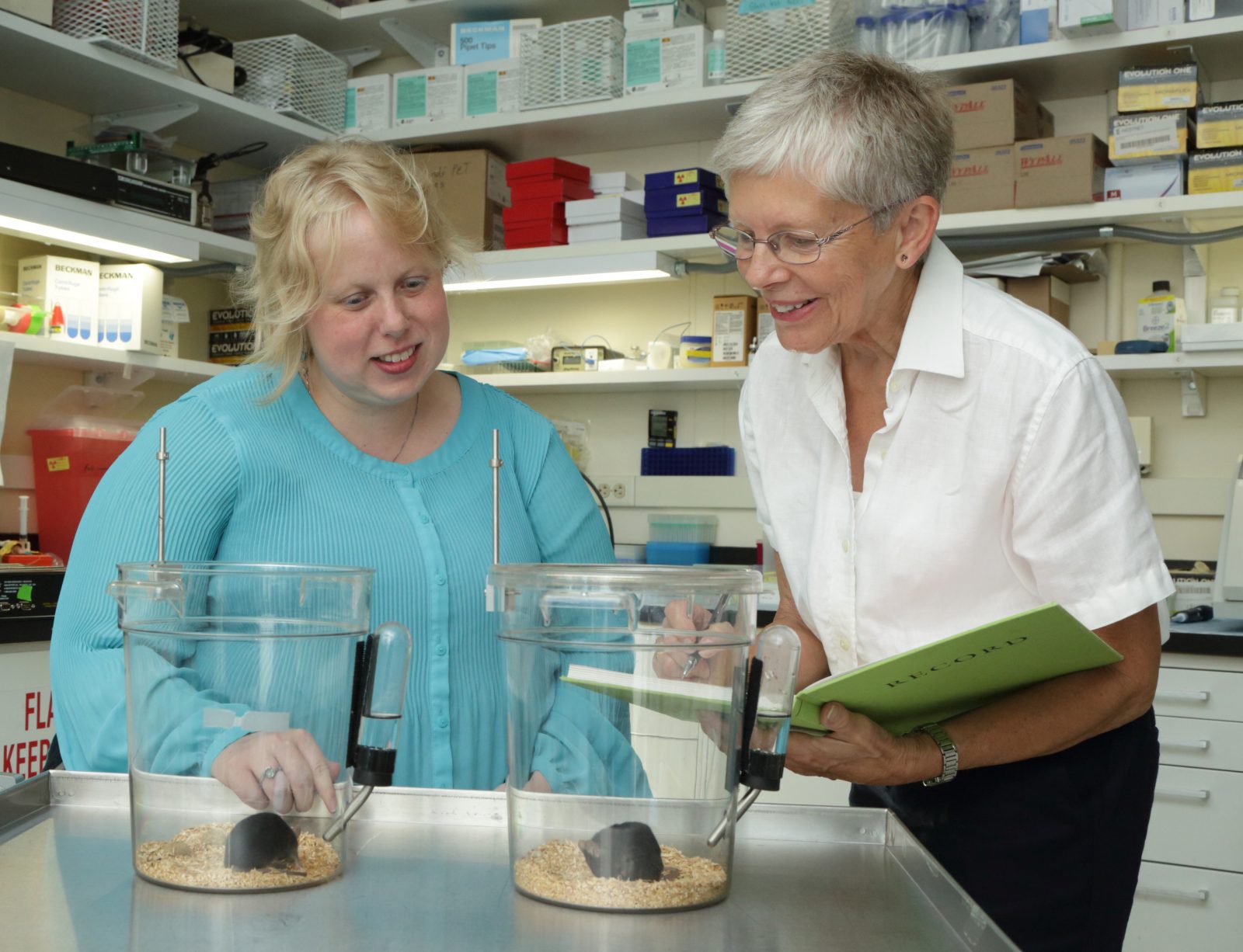Fragile X Cure One Step Closer with FRAXA Support of $1 Million in New Research
2016: 4 Countries - 10 Teams - $1 Millions
From finding new treatment targets, to pinpointing outcome measures for future clinical trials, to attempting to reactivate the gene which is silenced in Fragile X syndrome, these innovative scientists will bring us closer to a cure.
Improving Clinical Trials
Many parents of children with Fragile X know well the struggles of getting their children to sleep through the night. Mice and fruit flies engineered to mimic Fragile X Syndrome also have disrupted sleep. Drs. Westmark and Smith will test potential therapeutics in mice using sleep as an outcome measure and investigate whether sleep could be used as an outcome measure for future clinical trials.
The search is on for a simple blood test to measure how well a treatment works for an individual with Fragile X. Dr. Frank Kooy’s team investigates.
Testing Treatment Targets
One of the goals of FRAXA’s research program has been to find biological pathways affected in Fragile X that are amenable to treatment with small molecules (drugs). Past efforts have been successful, generating large numbers of treatment targets, and this year, Dr. Osterweil and Dr. Bardoni will study new promising targets.
All these treatment targets raise an important question: are these various neural pathways and targets related at some key point? Is there a critical node, a point where pathways connect, which would allow for the most effective treatment? Two projects funded last year are looking for just such critical nodes (see Vanderklish and Moine). Until a critical node is found, we may need combinations of drugs to best help people with Fragile X syndrome. Dr. Razak’s study of combination treatments aims to show us the best way forward and form the basis for success in clinical trials.
Reactivating the Fragile X Gene
The holy grail of Fragile X research is to reactivate the gene, FMR1, which is silenced in people who have the syndrome. Using genetic engineering, researchers can already switch on the gene in adult Fragile X mice, and correct symptoms in this way. Teams led by Dr. Peter Todd and Dr. Jeannie Lee will pursue gene reactivation in mice using the new technique, CRISPR.
Congratulations to the new grantees! The grand total of these awards is $1,022,000 over the next two years. Additional awards still to come!
Fragile X Mutant Mouse Models
With $375,000 in grants from FRAXA, Dr. David Nelson developed an array of advanced mouse models of Fragile X. These models are available at Jackson Labs (JAX).
Read More »MicroRNAs as Biomarkers in Fragile X Syndrome
The team at Johns Hopkins University studied groups of small RNAs, known as microRNAs, which are greatly decreased in brain tissue of Fragile X mice vs. normal controls.
Read More »Repurposing Drugs to Dampen Hyperactive Nonsense-Mediated Decay in Fragile X Syndrome
FRAXA-funded research showed nonsense-mediated mRNA decay is overactive in Fragile X, pointing to existing NMD-suppressing drugs like caffeine as potential treatments.
Read More »Altered Sleep in Fragile X Syndrome: Basis for a Potential Therapeutic Target
With this FRAXA grant, Dr. Carolyn B. Smith and Dr. Rache Sare at the National Institute of Mental Health investigated the basis of sleep problems in Fragile X syndrome.
Read More »Abnormalities of Synaptic Plasticity in the Fragile X Amygdala
With FRAXA funding, Dr. Sumantra Chattarji at NCBS explored how Fragile X alters amygdala function. Results were published.
Read More »Effects of Metformin in Fmr1 Knockout Mouse Model of Fragile X Syndrome
Metformin, a safe diabetes drug, activates AMPK to rebalance protein synthesis. FRAXA-funded work investigated its potential to treat Fragile X.
Read More »






